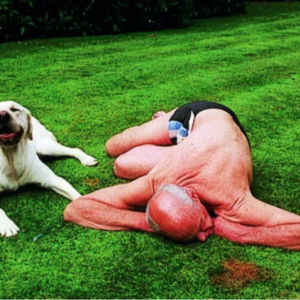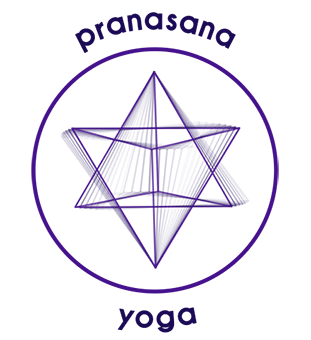Have you ever suffered with Sciatic Pain?
If the answer to this is 'yes' and if you had a severe experience, you will know that sciatic pain can be completely debilitating, as well as a huge emotional challenge. This is especially the case if the episode lasts for any number of weeks or months.
Both Matt and Dorna have had such episodes in the past, due to the various pressures and stresses which come with life, on and off the yoga mat.
Here below are a few suggestions which we hope you will find very beneficial if you are currently in the throes of a sciatic pain episode. The sequence is also very useful for any back stresses, strains and pains, as long as you take it easy and always listen to the signs of ease/ comfort or dis-ease/ discomfort which your body is signalling to you.
You can practice the whole sequence or pick and choose from those shapes/postures below which you feel appeal to you and you know your body will be able to access.
Brief Anatomy and Physiology of the Sciatic Nerve...
The sciatic nerve is formed by nerve roots from the fourth lumbar to third sacral spinal nerves, which converge within the sacral plexus, a complex network of nerves in the lower back.
The nerve fibers from these roots combine to create the sciatic nerve, which then travels through the pelvis and down the leg.
Practice Sequence to Help Alleviate Sciatic Pain ~
For images of the poses please look at the images referred to at the end of the sequence.
1. Supine - lie on your back and bend your knees, keeping your feet flat (as comfortable as possible) on floor. Place a cushion or similar under your feet if you need to.
Gently rock the pelvis up and down - slowly and smoothly..... rock carefully and slowly 10,20,30, 40, 50 times - you are looking to make the movements as smooth as you can and identify where there is discomfort, even fear. When you hone in on the ’troubled/delicate/sensitive’ area/s give them more time/awareness by repeating the rocking movements just there, as though you have zoomed in, making micro~micro movements. You may also find the occasional and slight sideways arching of the ribcage, which opens the sides of the spine, can also help.
Allow this undulating or rocking up and down the spine to travel as high up as possible just by being aware of the length of your spine. When the movements have reached the ribcage and make it want to move, then explore connecting the thoracic movement with a little nodding of your head - in three words, it’s all a little bit like a ’swimming fish pose’ 😉
Image here of Supine with Feet Resting on the Floor
supine knees bent and feet resting on floor - Google Search
2. Legs on settee/chair/bed - lie still with just your lower legs resting on the settee/chair/bed. Your back rests flat on the floor (for at least 20 mins if you can) at least once a day, every day. This is a boon for your back and will create a traction to release your lumbar spine especially and therefore, sciatic nerve.
Image here of Supine with Legs Resting on Chair
supine legs resting on chair - Google Search
3. Twist - If your pain is super intense you may need to wait until things improve a little before trying the twists....After placing your feet back on the floor, if you are okay to gently twist, then twist - turn your navel and knees to one side and then the other. Hold steady when you feel like it. Go easy and by keeping your feet on the floor you will have more support. Your legs go one way and your head gently looks opposite if this is comfortable. Move slowly and mindfully.... never strain, focus upon where you feel relaxed and allow your breath to arise from your belly.
4. Happy Baby - If all goes well and you are feeling better then you may be able to raise your legs skyward. If this is a challenge then just leave this until a later time and refer to exercises 1. and 2. above.
Happy Baby changes the pressures and allows you to explore lifting the spine softly at both ends (in order to flex (forward bend) a little. Having said that, the 'sciatic spine' may like a little back bend so, taking it very easy - gently nod your head a few times and then rock your pelvis (lift and lower your tailbone and sacrum) slowly to and from the floor a few times. You may find you can then move both ends (pelvis and cranium) at the same time gently - slow small movements with feeling/awareness are very important.
Image here of Happy Baby Pose
happy baby pose - Google Search
5. Sphinx - lie on your tummy also resting on your forearms for support and very gently lift your heart and head - this places you into the sphinx position. Breathe from your belly and practice...
A. holding statically and breathing and very lightly squeezing your middle (perineum) pelvic floor up as you exhale and relax as you inhale (do this with all exercises - it can be so subtle that there’s actually no ‘physical squeeze', but rather just the thought of doing it).
B. Apply the spinal undulation of reaching for the floor with the tailbone and then reaching up the tailbone towards the pubic bone. Slowly nod your head and then twist it side to side.
Image here of Sphynx Pose
6. Child’s Pose - lie in this fetal position if this is comfortable. You may wish/need to use some cushions/pillows to bolster (support and make space) your body. You can place a pillow in the abdomen and lie over it for a minute or so, which opens the back beautifully. Don't hold the position for too long if you are compressing the belly with a cushion as the abdominal aorta and vena cava won't like this.
Image here of Child’s Pose
7. Hare Pose - if child’s pose goes well this can help you continue to open the back of your spine as well as provide the super relaxing benefits of being inverted. You must be comfortable and consider your own health status. For example, the inversion can raise the blood and sinus pressure. A little bit of this may well be good for you, but only you know and must decide how much so.
Image here of Hare Pose
8. Rocking in Chair - gently rock the spine by moving from the back of your sitting bones to the front of them - this is also like sitting in a child's swing in the park - remember those days! Very gently squeeze the sitting bones in to the chair to rock the spine like the 'Cat-Cow' exercise. As you do this visualise and feel your spine lengthen to the ground below and the sky above out above through the crown of your head. Again, this is very similar to the motion of a fish swimming, as you send a wave from your tail fin up to your head. The only difference is that you are sitting upright. I used to find this a boon when driving and suffering sciatic many years ago. I found a lot of comfort in holding the lumbar spine in the 'Extension' i.e, back bend /inward curving lumbar spine position. Also go easy with Child and Hare poses above, if you feel they are negating the effect of Rocking Chair.
Image here of Sitting Rocking in Chair
sitting rocking in chair - Google Search
9. Squat - hold the door handles either side of a firm door or bannister and sit your pelvis as low as really comfortable while keeping the soles and heels of your feed grounding. Hold for a few moments or more, as is comfortable. One can also do this inside a door frame using the frame to rest the arms against. This will gradually traction open your spine. Gently nod your head down and up a few times and then when your head is down turn it slowly left and right a few times.
Images here of Squatting Holding Door Handles
squatting holding door handles - Google Search
10. Sleeping Pigeon Pose for piriformis/glutes - as well as your pelvis, spine, shoulders and restorative nervous system - take it easy if you have recently overstretched the piriformis muscle, as you don’t wish to exacerbate/inflame the healing. Do both sides as they talk to each other 🙂
Image here of Sleeping Pigeon Pose
sleeping pigoen pose - Google Search
11. Flapping Fish - as things all ease, I would use this pose to balance the pigeon and because it’s seriously relaxing.
Image here of Flapping Fish Pose
flapping fish pose - Google Search
12. Tetley Twist

- the easier the Flapping Fish becomes, start to implement the Tetley Twist and progressively apply the Tetley Twist as your Comprehensive All In One. That is only if you have found it to be very comforting. Do not rush to turn your head opposite to your knees until the actual pressure of lying there makes the head want to turn, in the same way as when body turns over in sleep when in bed.
Summary -
Although this sounds almost contradictory, please use this sequence/these postures to promote relaxation. This is fundamentally what you are seeking as this will promote your body's innate healing response if you are 'locked in' to your sympathetic or 'fight and flight' nervous system. This is very possible because sciatica can be so very challenging.
Take your time and to repeat, start with the beginning exercises and as your body begins to soften and the tension and pain release over the days and weeks, you may well find you can enjoy all of the 12 postures included.
Good luck - I wish you healing and the causes of healing, I wish you peace and the causes of peace 🙂
Matt Gluck ~ April 2025
You do not need to practice all of these postures suggested and a little and often is good. It is better to try them all separately and do them with such awareness that eventually - just knowing how good they are - can relieve physical, mental and emotional tensions before you even start your practice!
Links to Poses for Sciatic Nerve Pain Release Sequence
Supine with Feet Resting on the Floor
supine knees bent and feet resting on floor - Google Search
Supine with Legs Resting on Chair
supine legs resting on chair - Google Search
Supine Twist
Happy Baby Pose
happy baby pose - Google Search
Sphynx Pose
Child’s Pose
Hare Pose
Sitting Rocking in Chair
sitting rocking in chair - Google Search
Squatting Holding Door Handles
squatting holding door handles - Google Search
Sleeping Pigeon Pose
sleeping pigoen pose - Google Search
Flapping Fish Pose
flapping fish pose - Google Search
